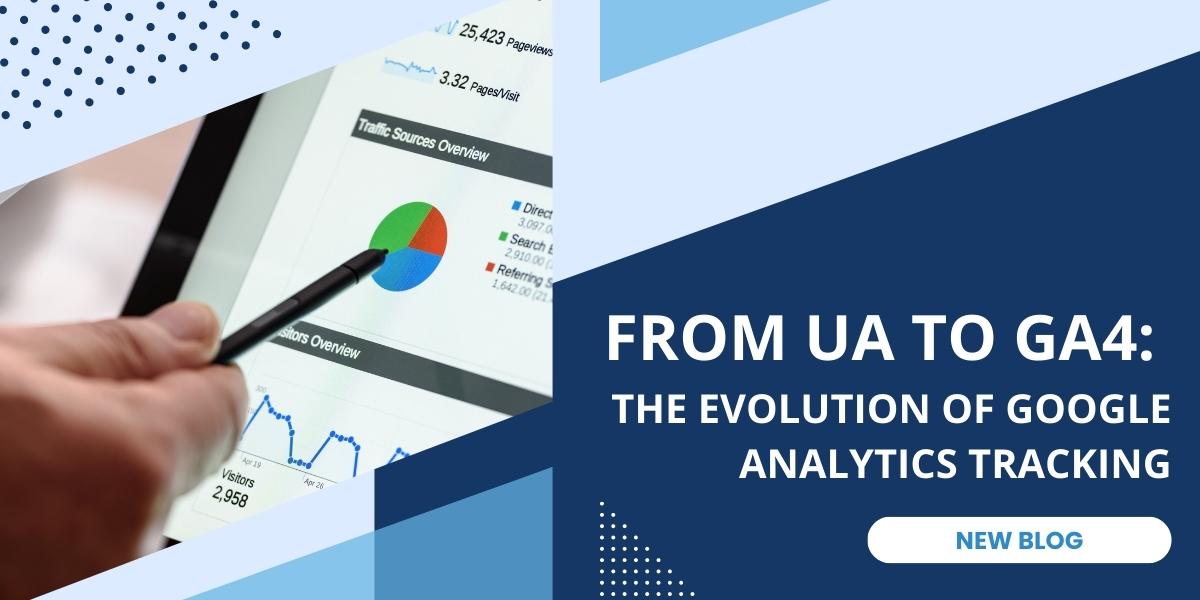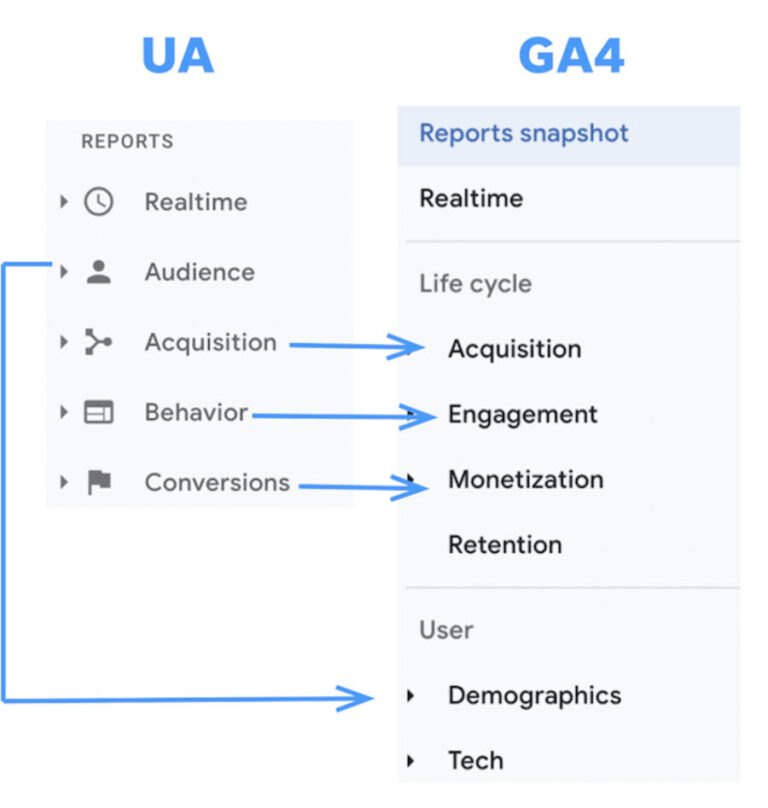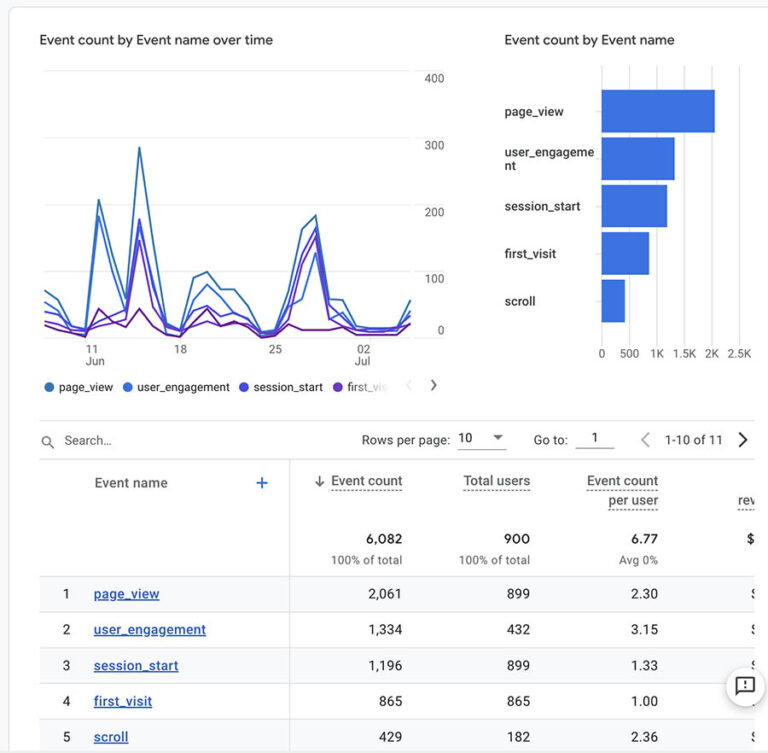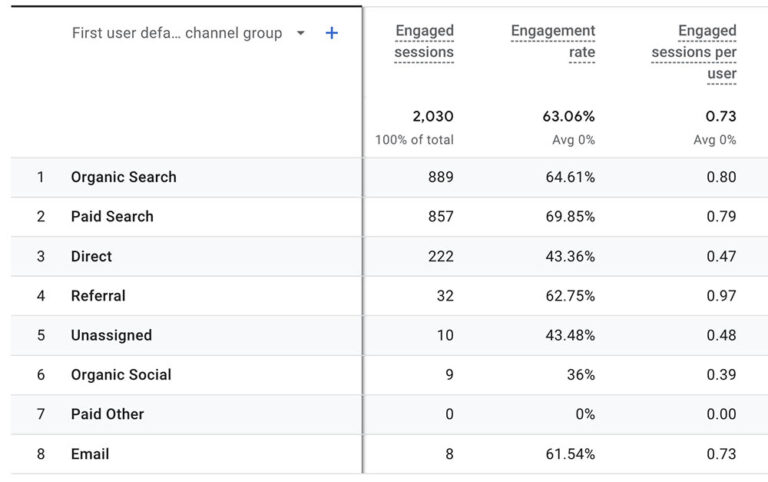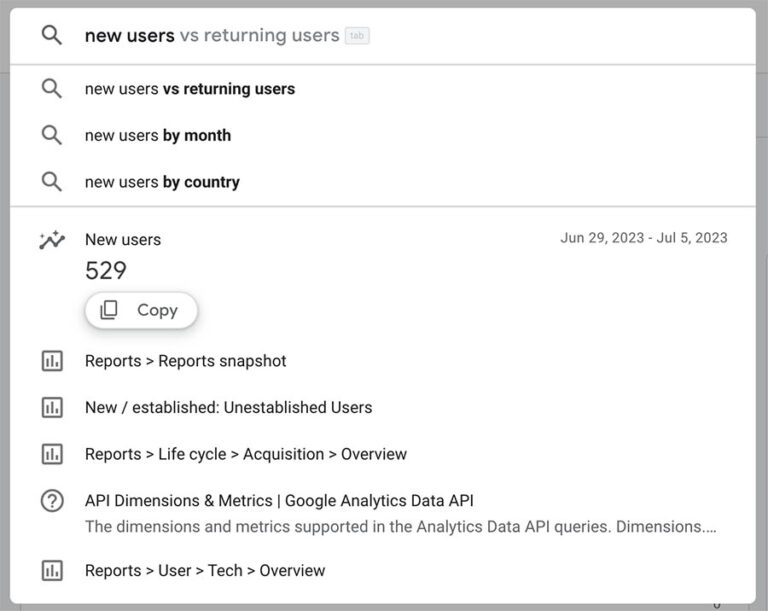In November 2005 Google launched its original Google Analytics platform, a free web analytics service that tracks and reports website traffic and mobile app traffic events. In October 2012 Google announced an upgraded version called Universal Analytics (UA). Since that time Google Analytics has grown into one of the most widely used web analytics services on the web.
In case you missed the recent news, Google announced that its Universal Analytics (UA) platform stopped processing data on July 1, 2023. In exchange, they developed the next-generation Google Analytics 4 (GA4). While the “new” GA4 has been around since October 2020, the general adoption of it has been low. Many (myself included) have held onto the familiar UA, while mostly ignoring GA4, which is quite different.
Alas, a new frontier is upon us. We crossed the long-awaited UA sunset date, and this change can no longer be ignored. It’s time to explore Google Analytics 4. This post will dig into some of the differences between UA and GA4, including the differences in how the two measure metrics. As we mourn the death of UA, we’ll also explore the benefits of the new GA4.
If this is all Greek to you and you need help implementing GA4 on your website or with gathering metrics and reporting on your website’s activity, please reach out to our team. We’ll be happy to do a complementary analytics audit of your site.
Why the Switch from UA to GA4?
In other news, Google has been under fire for user privacy concerns and increasing online privacy regulations. Their data collection practices have instigated costly lawsuits against them. These became especially prominent following the implementation of the European Union (EU) General Data Protection Regulation (GDPR) in 2018.
GDPR requires strict privacy protections and consent when handling personal information. Google’s tracking practices violate this. Canada has since followed suit with stricter online privacy/data regulations, along with a growing list of states in the US, including California, Colorado, Connecticut, Utah, and Virginia.
As a result of these growing privacy concerns and regulations, GA4 is Google’s attempt to provide a more privacy-friendly experience for users.
GA4 Offers Better Privacy
Compared to UA, GA4 offers better user privacy options. The most notable change is that GA4 no longer collects or stores IP addresses. It also allows for easier data deletion and data retention options. Google uses first-party cookies alongside AI to fill in data gaps. This keeps them compliant with major privacy laws.
Let’s look at some more differences between GA4 and UA.
Seven Differences in GA4 vs. UA:
1. Reports Dashboards
The most obvious difference between GA4 and UA is how the reports are laid out. This can certainly take some getting used to. While the reporting setup looks different, most of what you can see in UA, you can see in GA4.
In UA the main reports menu = Realtime, Audience, Acquisition, Behavior, and Conversions.
In GA4 the main reports menu =
- Acquisition: Insights on the channels from which your visitors originate (organic search, social media, referral traffic, or other sources)
- Engagement: Metrics such as engagement time on the site, events, conversions, pages and screens, and landing pages reports
- Monetization: Details about eCommerce, subscription, and ad revenue to quickly see how much money your website is generating
- Retention: User retention data on your website or app including new and returning users and user retention by cohort. (A cohort is a collection of users who are grouped by some criteria, such as the day the user was acquired.)
- Demographics: Key characteristics about the people who visit your website or app, including their language, interests, location, age, and gender
- Tech: Displays your website or app traffic by your visitor’s technology, such as platform, operating system, screen resolution, and app versions
2. GA4 & Event-Based Data
GA4 automatically captures interactions as events. This is a significant difference from UA, where interactions were captured as page views, transactions, and social interactions. Some events are sent automatically and additional ones can be added. Sessions link data to a single individual and track them specifically as they interact with your site.
Event data is anonymous and the importance is placed on specific actions taken instead of specific users taking those actions. With GA4, the session_start event generates a session ID with which all subsequent events during that session are associated.
3. Session Measurement Changes
In UA a session represents the period that a user is actively engaged with your site. Things that ended a session in UA included 30 minutes of inactivity, your session timeout settings, or the clock passing midnight, resulting in a new session.
In GA4 a session also ends after 30 minutes of inactivity, but sessions can now carry over across midnight and are not affected by encountering new campaign parameters. This is relevant if you have a global customer base (or late-night shoppers!) Consider the timezone of users and how likely they are to cross the midnight threshold to restart a session.
4. Engagement Rate is the new Bounce Rate
With GA4, Google decided to take a more positive approach and report on figures for engagement rate vs. bounce rate. Engaged sessions are sessions that lasted at least 10 seconds, had at least one conversion event, or had at least two page/screen views.
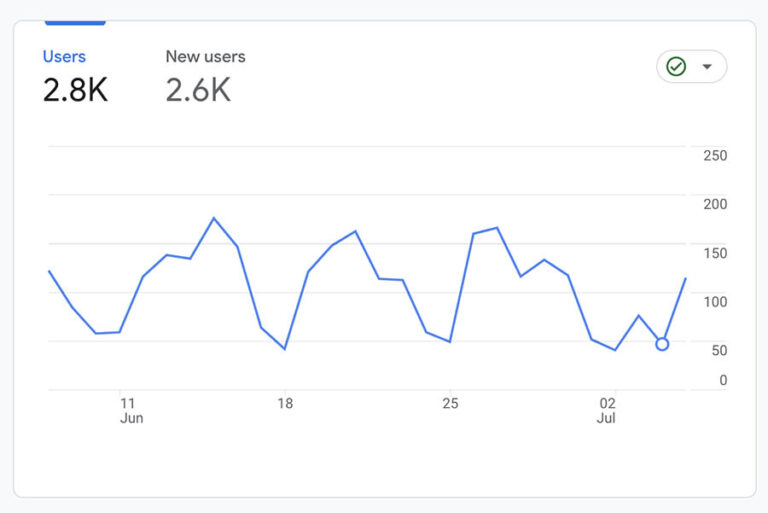
Don’t worry, bounce rate didn’t fully go away in GA4, but it’s no longer front and center in the default reports. Bounce rate metrics can be added to the default reports by editing the columns with the pencil at the top right.
5. Views are now Data Streams
In UA the account structure contained three elements: Account > Property > View. In GA4 it’s only Account and Property. GA4 does not contain views, but rather data streams. In GA4 a data stream represents a flow of your website or app to Analytics. Whereas UA collects data at the property level with a tracking ID, GA4 collects data at the stream level via a unique data stream IA. Can have up to 50 data streams and a limit of 30 app data streams.
6. Cookie-less Tracking and “Blended Data”
GA4 is designed to work with or without cookies. Cookies are created to identify when you visit a new website. They are stored in your web browser and help a website remember information about your visit. When cookies are only used by the website that the user is visiting they’re called first-party cookies. First-party cookies are generally considered more acceptable and are allowed in GA4.
GA4 allows you to track User ID instead of cookies, allowing the user to maintain anonymity while still tracking their behavior on a site and enabling you to learn more about the people visiting your site and the actions they’re taking. GA4 can fill in data gaps as the world becomes less and less dependent on cookies. By leveraging machine learning and statistical modeling, Google calls this “blended data”.
7. Combined Website + App Tracking
GA4 allows the ability to track website and app data in the same Google Analytics property versus having to toggle between two different properties, so it’s much easier to combine data across them. Many users buy things or take action on business apps on their phones, so this helps to get a full view of all touchpoints.
Comparing Metrics: UA to GA4
As the transition from UA to GA4 happens, it’s important to note that comparing numbers between the two will not match exactly because definitions/measurements are changing. There are differences in how UA and GA4 report metrics.
Users
In UA there were two user metrics: total users and new users. In GA4 there are three: total, active, and new users. UA highlighted total users (shown as ‘users’) in most reports, whereas GA4 focuses on active users, also shown as users.
So, while ‘users’ appear the same, the calculation for the metric is different between UA and GA4 since UA was using Total and UA is using Active.
Page Views
Page views should be close between GA4 and UA since the Google tag still fires on each page and generates a page view. Unique page views are going away in GA4. Unique page views in UA were the total number of pages viewed, while duplicates weren’t counted. In GA4, Unique Pageviews has been replaced with Unique User Scrolls. This metric considers unique users who scrolled down at least 90 percent of the page.
Benefits to GA4
Once you get used to how things are set up in the new GA4, it’s clear there are many benefits Check out some of the top benefits of GA4 below.
Audience Triggers
Audience triggers let you trigger events when users take certain actions or cross conversion thresholds. You can analyze these events in your reports and enable them as conversions.
Explorations
The Explorations section in GA4 provides regular reports and advanced data analysis. For the big data nerds, this data can be downloaded into BigQuery. Explorations allow you to create custom reports from scratch or through predefined templates. This opens up the door for powerful sales funnel analysis.

Customer Lifecycle Reports
Customer Lifecycle reports give you a complete view of how users behave from acquisition to conversion.
Machine Learning & Predictive Audiences
Machine learning and predictive audiences are a key part of GA4 and include predictive metrics to identify users and their actions that likely lead to a purchase or conversion. Probability metrics are helpful in the user lifetime explorations of GA4. (User lifetime analyzes how your visitors behaved on your website over time and the value over their lifetime as a customer.)
Predictive audiences are useful for Google Ads campaigns, remarketing audiences, and re-engagement campaigns.
Anomaly Detection
GA4 helps you track anomalies in your data. For example, a big drop in events on your site.
GA4 Search Bar
The GA4 search bar makes it easy to find your way around GA4. Search for relevant reports or ask specific questions on Google to get instant answers in the search bar.
Spam Referrals Filtered
GA4 prevents spam by forcing all Measurement Protocol hits to have a secret key, which filters out spam referrals before they are recorded. (GA4 measurement protocol is a standard set of rules for collecting and sending events directly to Google Analytics servers.)
Help with GA4 Implementation on Your Website
If you haven’t migrated from UA to GA4, now is the time, or you could lose data moving forward. Check out Google’s help article here to see if you have UA or GA4 on your site. If you need more help with GA4 migration, implementation, or reporting on the metrics of your website analytics, reach out to our team for a complementary analytics audit. We can help you transition over to the new GA4 without the headache.
Onwards into the new data universe!

